What We´re Reading… August 2023
The August issue of Transplantation, the official Journal of ILTS and the Transplantation Society, is out now.
It is a must-read for anyone working in the field of liver transplantation.
Article selections by Ryan Chadha, Sadhana Shankar, Alexandra Shingina, Alessandra Mazzola, Carmen Vinaixa, Madhukar Patel and Abdul Hakeem.
HEPATOLOGY
British Medical Journal-Gut
Global prevalence of non-alcoholic fatty liver disease in type 2 diabetes mellitus: an updated systematic review and meta-analysis
Introduction: Non-alcoholic fatty liver disease (NAFLD) is the leading cause of chronic liver disease, with type 2 diabetes mellitus (T2DM) as a major predictor. Insulin resistance and chronic inflammation are key pathways in the pathogenesis of T2DM leading to NAFLD and vice versa, with the synergistic effect of NAFLD and T2DM increasing morbidity and mortality risks. This meta-analysis aims to quantify the prevalence of NAFLD and the prevalence of clinically significant and advanced fibrosis in people with T2DM. More
JHEP Reports
Cirrhosis-related sarcopenia may not resolve after liver transplantation
Background & Aims: Sarcopenia has significant burden in cirrhosis and has been shown to worsen short-term post-liver transplantation (LT). This study aims to evaluate the long-term change in sarcopenia post-LT along with its associations and predictors. More
Transplant Infectious Disease
Favorable experience of transplant strategy including liver grafts from COVID-19 donors: One-year follow-up results
Background: Since November 2020, Italy was the first country to carry out a protocol and use liver from COVID-19 donors. We aimed to evaluate the medium-term outcome of patients who underwent liver transplant (LT) with those grafts. More
SURGERY
Annals of Surgery
Novel Benchmark for Adult-to-Adult Living-Donor Liver Transplantation. Integrating Eastern and Western Experiences
Objective: To define benchmark values for adult-to-adult living-donor liver transplantation (LDLT). Background: LDLT utilizes living-donor hemiliver grafts to expand the donor pool and reduce waitlist mortality. While references have been established for donor hepatectomy, no such information exists for recipients to enable conclusive quality and comparative assessments. More
Annals of Surgery
Living Donor Liver Transplantation (LDLT) for Hepatocellular Carcinoma (HCC) within and Outside Traditional Selection Criteria: A Multicentric North American Experience
Objective: We evaluated long-term oncologic outcomes of patients post-LDLT within and outside standard transplant selection criteria and the added value of the incorporation of the New York-California (NYCA) score. Summary background data: LDLT offers an opportunity to decrease the liver transplant waitlist, reduce waitlist mortality and expand selection criteria for patients with HCC. More
JAMA Surgery
Long-Term Survival, Prognostic Factors, and Selection of Patients With Colorectal Cancer for Liver Transplant: A Nonrandomized Controlled Trial
Importance: Liver transplant for colorectal cancer with liver metastases was abandoned in the 1990s due to poor overall survival. From 2006, liver transplant for in nonresectable colorectal liver metastases has been reexamined through different prospective trials. Objective: To determine predictive factors for transplant long-term survival and cure after liver transplant. More
ANESTHESIA AND CRITICAL CARE
Liver Transplantation
Plasma exchange for acute and acute on chronic liver failure: A systematic review and Meta-Analysis
Plasma exchange (PE) is a promising therapeutic option in patients with acute liver failure (ALF) and acute-on-chronic liver failure (ACLF). However, the impact of PE on patient survival in these syndromes is unclear. We aimed to systematically investigate the use of PE in patients with ALF and ACLF compared to standard medical therapy (SMT). More
Pediatric Anesthesia
Development and validation of a multivariable prediction model in pediatric liver transplant patients for predicting intensive care unit length of stay
Background: Liver transplantation is the life-saving treatment for many end-stage pediatric liver diseases. The perioperative course, including surgical and anesthetic factors, have an important influence on the trajectory of this high-risk population. Given the complexity and variability of the immediate postoperative course, there would be utility in identifying risk factors that allow prediction of adverse outcomes and intensive care unit trajectories. More
European Geriatric Medicine
Can the Multidimensional Prognostic Index (MPI) be a predictive instrument for mortality in older adult liver transplant candidates?
Purpose: The most recent guidelines recommend that selection of liver transplant recipient patients be guided by a multidimensional approach that includes frailty assessment. Different scales have been developed to identify frail patients and determine their prognosis, but the data on older adult candidates are still inconclusive. The aim of this study was to compare the accuracy of the Liver Frailty Index (LFI) and the Multidimensional Prognostic Index (MPI) as predictors of mortality in a cohort of older people patients being evaluated for liver transplantation. More





